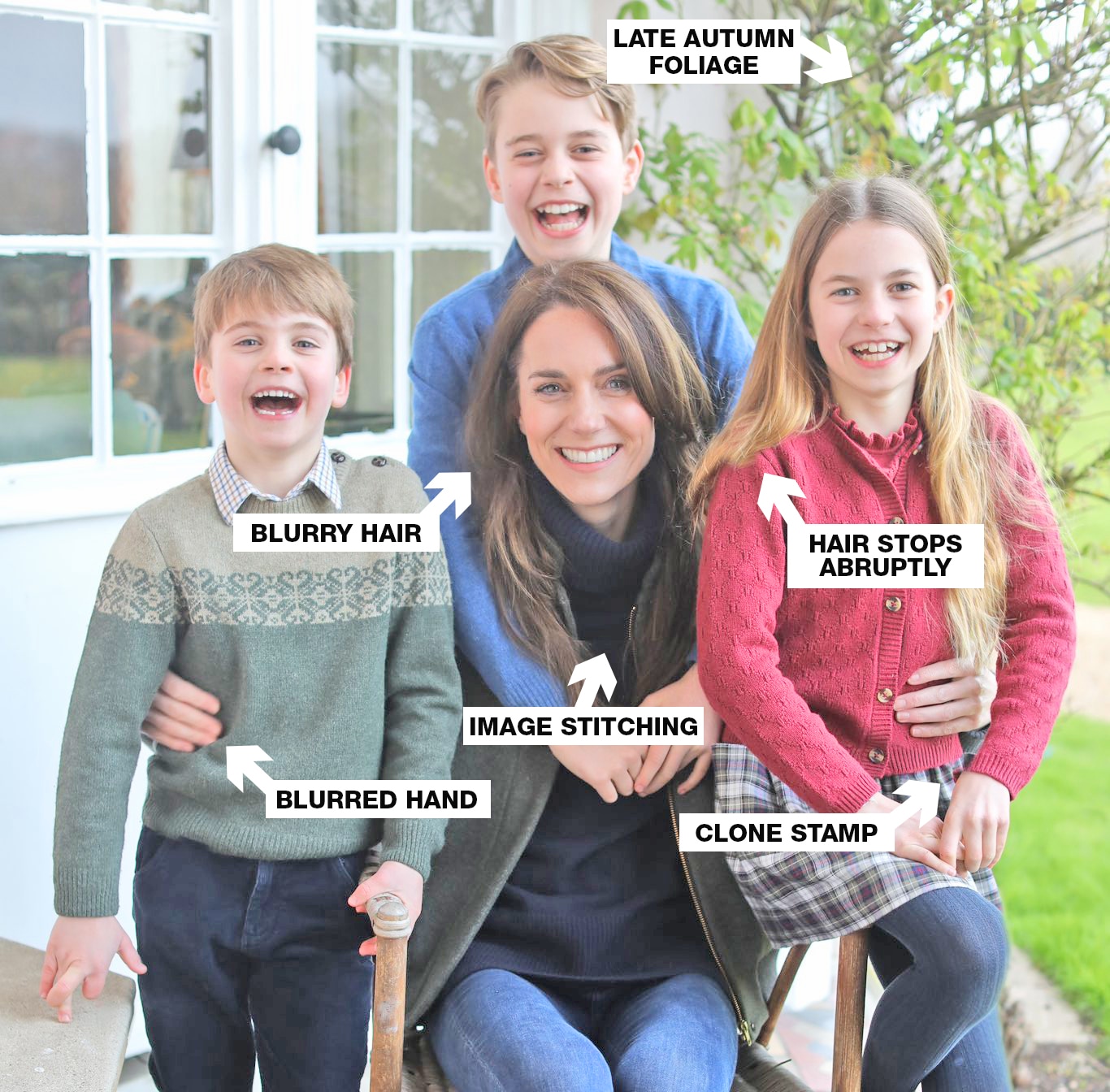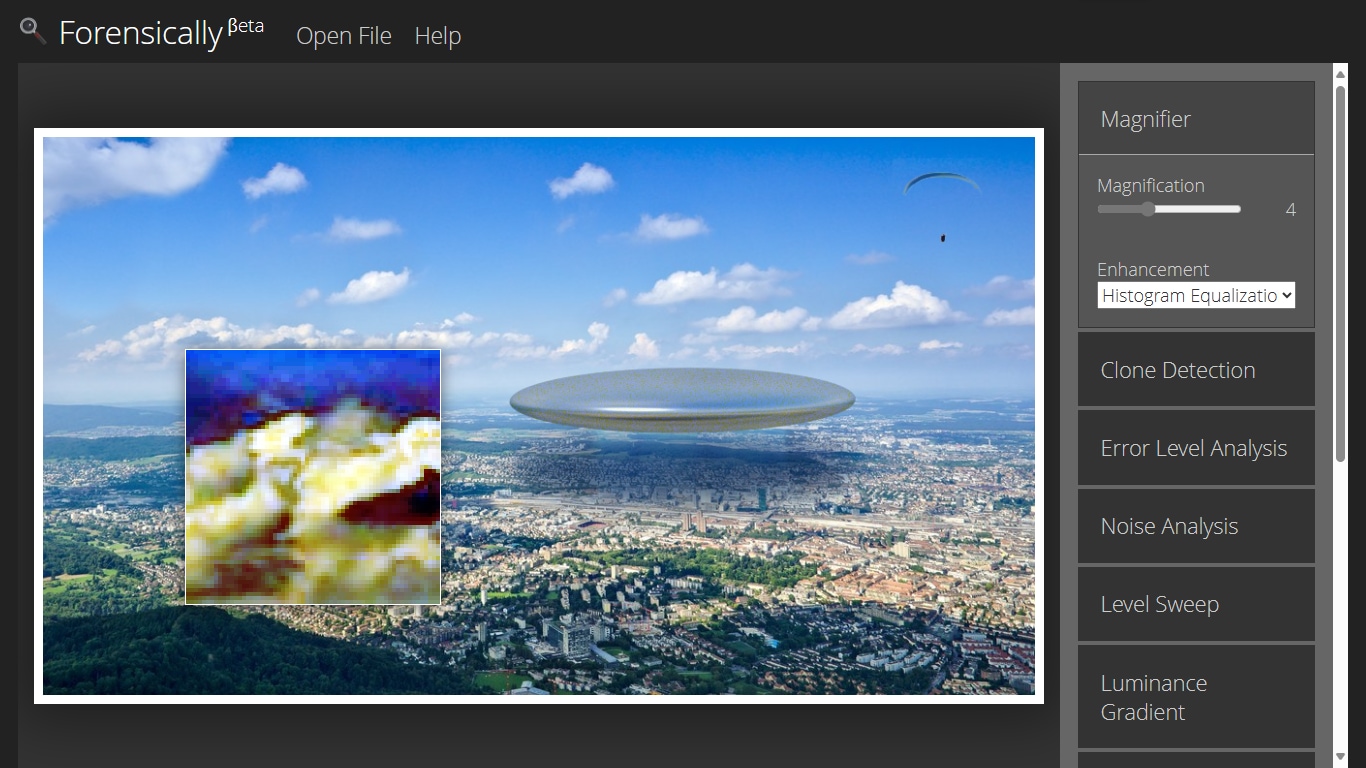The internet was sent into a frenzy when the royals released a seemingly innocent family photo of Princess of Wales, Kate Middleton, and her kids for Mother’s Day. But eagle-eyed observers quickly realised something was off about the pic – and it didn’t take long for the Palace to admit it had been doctored.
While the royal family tried to pass off the fumble as Kate’s attempt at amateur image editing, the backlash showed how quickly public trust can be eroded by manipulated images. So in the spirit of the royal botch, let’s dive into how to spot manipulated images.

How the Kate Middleton edit was exposed
Let’s start by dissecting what tipped people off about the princess’s picture. Zoom in close and imperfections start jumping out – weird textures in portions of her hair, her suspiciously blurred hand, and zippers leading to nowhere. There are also some odd details in the photo like the kids’ crossed fingers and legs, which are rather unusual for a formal photo such as this. People on social media quickly spotted all these inconsistencies and pointed them out.
 (Image: Johnny Galuva/X)
(Image: Johnny Galuva/X)
In retrospect, the flaws seem a bit obvious. But most edited images are harder to detect than this image, so let’s move on to the other ways of spotting fakes.
Reverse image search
The simplest method to tell if an image is legit is performing a simple reverse image search. Basically, you upload the picture in question to a search engine or tool like Google Lens which then scans the web trying to find other instances of the image. You can keep scrolling till you spot the original unedited version.
It’s an easy way to expose lightly edited images. But the method relies on the original being out there to find – so it’s not foolproof for heavy edits or wholly computer-generated fakes.
Fake image detector apps
Some apps can also lend a hand in separating the real from Photoshop trickery. Tools like fakeimagedetector.com, Forensically, and FotoForensics use clever detection methods like noise analysis and RGB mapping to help you estimate an image’s authenticity.
Story continues below this ad
 (Image: Forensically)
(Image: Forensically)
The perk of these apps is you don’t need an encyclopedia knowledge of image forensics to use them. Just upload a suspect picture and the software will do all the nerdy analysis for you. Don’t expect all of these apps to immediately throw an “Aha, this photo is edited!” prompt at you, though. Often, you’ll have to study bits like noise analysis yourself to make out if an image has been tampered with.
Addition or removal of elements
When elements get slapped onto new backgrounds in Photoshop, editors often can’t blend the edges perfectly. The result is pixelated borders around the pasted object thanks to differing pixel patterns.
These halos tend to require a zoom to spot. But once you see those frayed edges, it’s a strong cue that something’s been composited. Of course, skilled editors can soften borders to hide their tricks – but lazy work leaves evidence.
The reverse is also true. Negative space left behind when removing people or objects from a photo can be really hard to conceal naturally. Signs of sloppy Photoshopping include weird colour splotches, lingering shadows, overly uniform patching, and more.
Story continues below this ad
Warping and distortions
Another common Photoshop abuse is using warp tools to digitally distort reality – slimming bodies, adding muscle, and the like. While effective at altering human forms, warp effects also tend to bend and skew the background in unnatural ways.
So keep an eye out for any suspiciously fluid-looking walls, floors, or other solid objects. Things looking a little too stretchy is a red flag.
Shadow and reflection inconsistencies
Properly matching lights and shadows is a Photoshop pro’s biggest headache. That’s because it’s extremely difficult to align artificial shadowing with an image’s existing lighting and geometry.
Lazy editors often apply basic “drop shadow” effects that look wrong once you start examining how they interact with surfaces and angles. If the shadows seem weirdly detached or defy the scene’s lighting, you’re likely looking at a composite.
Story continues below this ad
Reflections are another giveaway. Editors often miss or fake reflections on reflective surfaces like mirrors and windows. If something seems off about how an object is being reflected (or not reflected at all) – get suspicious.
Unnatural colours and lighting
Be on the lookout for objects that seem to have drastically different brightnesses or white balances than their surroundings. It often means pieces were composited from multiple Source images with mismatched lighting.
Odd depth of field
Most camera lenses capture the world with a limited depth of field – where objects at different distances are in or out of focus. So if everything in an image is perfectly sharp, no matter the range, there’s a good chance elements were pieced together from multiple source photos.
When depth of field is absent across an entire scene, it defies the physics of photography and can expose the image as an artificial composite. Getting too much in focus is usually a giveaway something’s been fabricated.
Story continues below this ad
Repeating patterns
Another dead giveaway is when you spot the same pieces of scenery or crowds duplicated over and over. It’s a lazy trick editors use to fake density by cloning and stamping the same elements.
Usually, you’ll pick up on it by noticing identical trees or faces repeating at strange intervals or scales. If it looks like the editors got a little too free with the copy-paste, you’re probably right.



 (Image: Johnny Galuva/X)
(Image: Johnny Galuva/X) (Image: Forensically)
(Image: Forensically)





